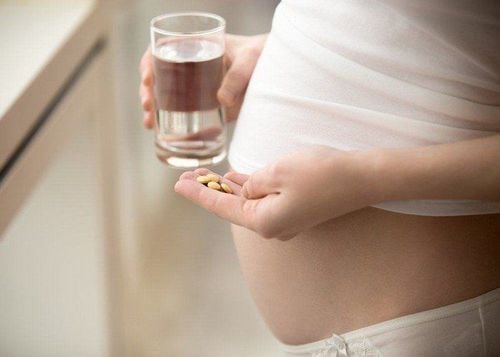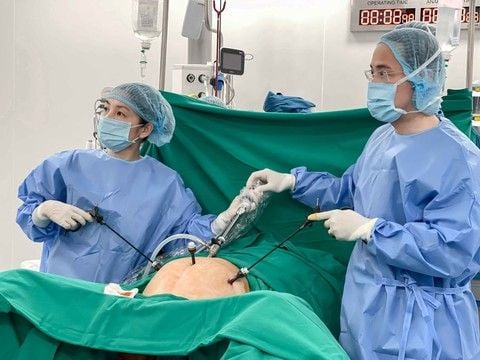After the first childbirth, the mother's body undergoes certain changes. Therefore, even though mothers have experience with natural childbirth, the process of the second "labor" still has some differences.
More than 70% of women after their first childbirth believe they will not have another baby due to being haunted by the prolonged labor pain lasting many hours, especially for those who deliver naturally. So, is the second normal birth painful, and is it different from the first? Let’s read the article below to understand better.
1. How is the second natural childbirth different from the first?
The second natural childbirth is faster:
According to mothers who have had their second natural childbirth, the labor time of the second delivery is shorter than the first. Typically, labor lasts from 6 to 24 hours. However, for the second childbirth, the labor time is reduced to 8 to 16 hours. Nonetheless, there are still cases where the second childbirth can be very challenging.
When experiencing signs of labor such as leaking amniotic fluid, pinkish mucus discharge from the vagina, or abdominal cramps, it is crucial to go to the hospital immediately to prepare for the delivery process. If the due date arrives without any signs, stay calm to avoid anxiety that might affect the fetus. Instead, consult your doctor for a check-up, as they may provide necessary instructions upon detecting any abnormalities.
The second natural childbirth is less painful:
Is the second childbirth painful? The answer is yes. No matter if it’s your first, second, or even third baby, labor pains—like hours of strong contractions—are always part of the process. The cervix still has to dilate from 0cm to 10cm for the baby to be born, and an episiotomy is typically performed. Thus, every childbirth involves pain, often compared to the pain of breaking 20 bones simultaneously.
Doctors agree that giving birth the second time is often easier. But if there’s a gap of more than 5 years, the pain might feel like the first time.
Additionally, the mother's body has become more flexible and well-adapted, and they have learned how to push and breathe correctly, making the process less painful.
The second natural childbirth causes more uterine pain:
While the second natural childbirth is less painful during delivery, postpartum uterine pain is double that of the first childbirth. This is a reality shared by mothers who have given birth twice.
Every mother faces postpartum uterine pain. After giving birth, the uterus needs to contract to return to its normal size and clear out leftover blood. In the second childbirth, the uterine muscles are weaker than during the first, and the uterus is more stretched. As a result, stronger and more frequent contractions are required to restore the uterus to its initial condition.
2. How to reduce pain during the second vaginal delivery?
Nutrition and rest
A mother’s body uses a lot of energy during labor and childbirth, so it is essential to replenish energy to prepare for the pushing process. Make sure to sleep 8-9 hours daily to avoid fatigue and exhaustion.
Move around more
In fact, changing positions, walking, or even sitting on a large exercise ball can help reduce the pain during childbirth.
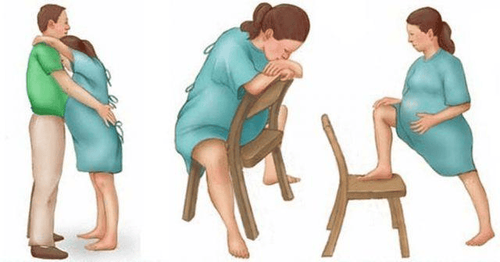
Not only that, walking more before giving birth helps the baby descend properly into the mother’s pelvis, making childbirth easier. Mothers can walk in the hallway, change positions between standing and sitting, and so on.
Apply warm compresses
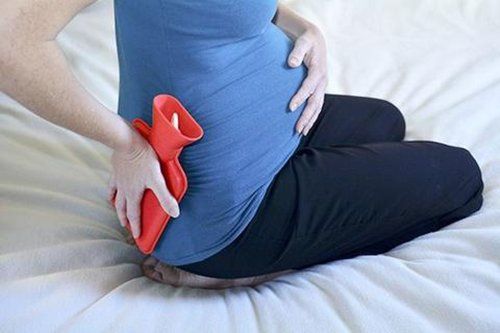
This is an effective method to reduce pain during labor contractions. Warm compresses help relax muscles and alleviate pain throughout the labor process.
Proper Breathing
Breathing correctly is a pain relief technique you should apply during vaginal delivery. So, what is proper breathing? When the first contractions appear, take a deep breath in and slowly exhale. Inhale through your nose and exhale gently through your mouth while staying relaxed.
You should avoid screaming or crying when the pain becomes intense. Instead, stay calm and maintain control in every situation. Proper breathing will help significantly reduce labor pain, while screaming will only leave you more exhausted and drained.
Epidural Anesthesia
If labor pain lasts too long, it can leave the mother exhausted and unable to push, which risks both her and the baby’s safety. Therefore, using epidural anesthesia during labor is a solution for mothers giving birth vaginally. However, this method requires thorough consultation and must be performed by a skilled and experienced anesthesiologist. No pain compares to labor pain, but giving birth to a second child is often easier than the first. So, don't worry too much—try to maintain a relaxed mindset and look forward to welcoming your baby into the world!
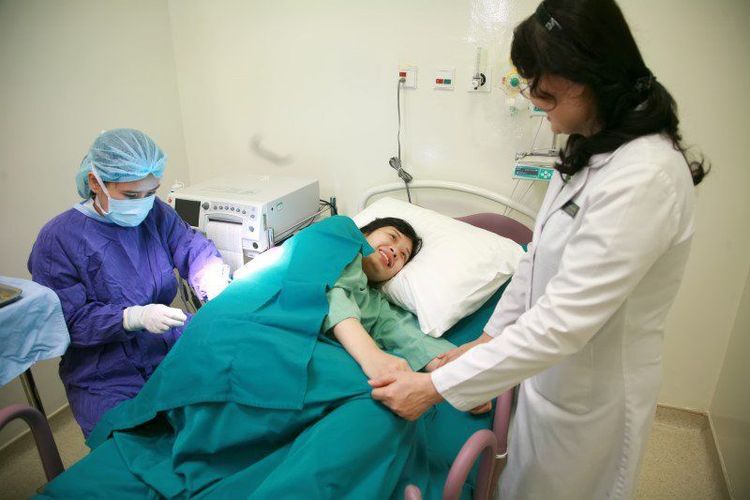
To eliminate the fear of pain during childbirth, Vinmec offers a comprehensive Maternity Package with a "Painless Birth" service. This service includes epidural anesthesia without morphine and pudendal nerve anesthesia, effectively reducing episiotomy pain, postpartum uterine pain, and more. It also avoids side effects, allowing mothers to recover faster and care for their babies more easily. In addition, Vinmec's team of doctors and nurses are highly experienced and well-trained specialists, ensuring precise anesthesia techniques and procedures. This makes the delivery process quicker and smoother. After giving birth, mothers are provided with postpartum massages and attentive care from nurses, helping to relieve fatigue and stress after prolonged labor, reduce pain, and prevent postpartum depression.
If you are interested in using Vinmec's comprehensive "Painless Birth" Maternity Package, please register directly on the website or contact the hotline for assistance.
To arrange an appointment, please call HOTLINE or make your reservation directly HERE. You may also download the MyVinmec app to schedule appointments faster and manage your reservations more conveniently.
To arrange an appointment, please call HOTLINE or make your reservation directly HERE. You may also download the MyVinmec app to schedule appointments faster and manage your reservations more conveniently.







